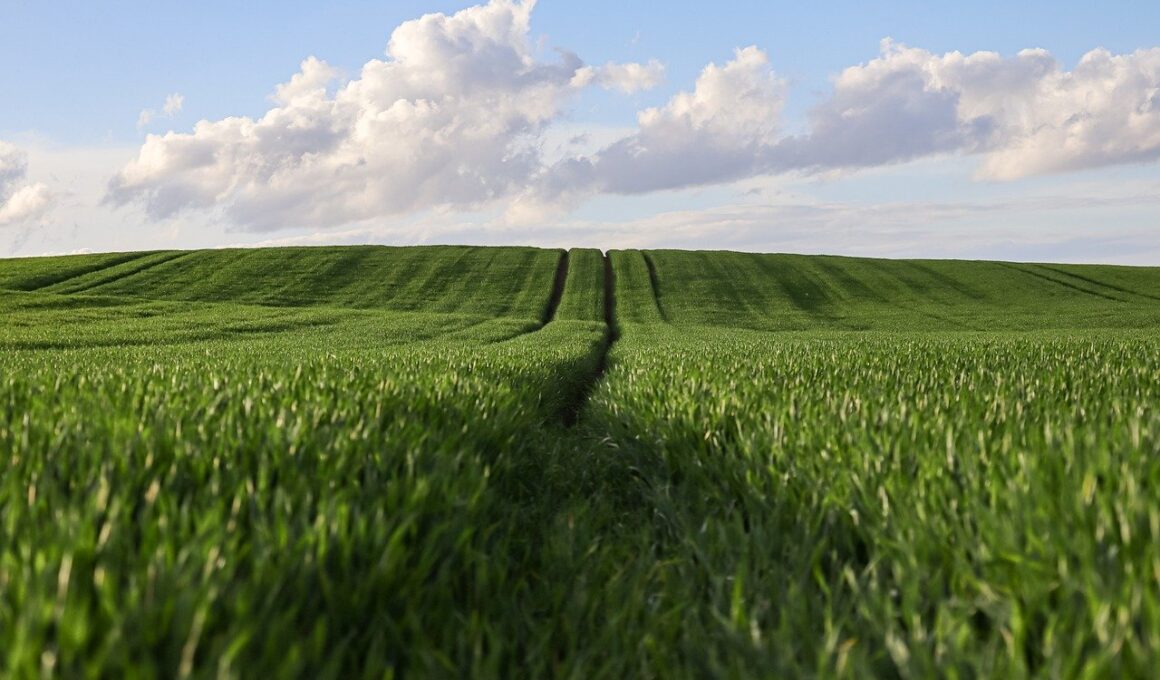FinTech’s Role in Enhancing Agricultural Finance Access
Financial technology, commonly referred to as FinTech, has significantly transformed various sectors, with agricultural finance being a notable beneficiary. By leveraging innovative solutions, FinTech has opened new pathways for farmers and agricultural enterprises to access vital financial resources. Traditional methods of obtaining financing are often cumbersome and inaccessible to many, particularly in developing regions. FinTech companies utilize digital platforms, mobile applications, and alternative credit scoring systems to streamline the lending process. This democratization of finance ensures that even smallholder farmers can secure loans without the burdensome requirements typically imposed by conventional banks. Moreover, FinTech solutions often provide tailored financial products designed specifically for agricultural needs. For instance, crop insurance, payment systems, and microloans are becoming increasingly available through digital channels. As a result, farmers can manage risks more effectively and improve their productivity. The integration of technology not only fosters greater financial inclusion but also promotes sustainable agriculture practices. By offering real-time data analytics and market insights, FinTech enables farmers to make informed decisions, ultimately enhancing their financial stability and agricultural output. This transformation is crucial in addressing global food security challenges.
The Impact of Mobile Technology
Mobile technology is a cornerstone of FinTech’s advancement in agricultural finance, providing unparalleled connectivity. Farmers can access financial services through their smartphones, removing geographical barriers that typically hinder rural access. This shift towards mobile solutions supports a broader range of financial operations such as savings, payments, and lending. Furthermore, it facilitates instantaneous transactions, which are crucial during peak agricultural seasons when time-sensitive decisions must be made. By using SMS alerts and mobile apps, farmers can receive timely updates on market prices and weather conditions, enhancing their operational strategies. Moreover, FinTech platforms often employ peer-to-peer (P2P) lending mechanisms, allowing farmers to lend to one another with minimal fees. This community involvement helps build trust and fosters a culture of financial cooperation among rural populations. Additionally, banks and other financial institutions are increasingly adopting mobile-first approaches, making it easier for them to reach previously underserved markets. This wave of mobile innovation is creating more inclusive financial ecosystems where agricultural stakeholders can thrive. In summary, the integration of mobile technology into agricultural finance not only simplifies access but also empowers farmers to take charge of their financial futures.
Another crucial aspect of FinTech’s role in agricultural finance is data-driven decision-making. Through the use of comprehensive data analysis, farmers can optimize their operations and financial planning. FinTech solutions harness data from various sources, such as satellite imagery, weather forecasts, and soil conditions, to provide insights that were previously inaccessible. These insights help agricultural producers make better-informed decisions regarding planting times, crop selection, and resource allocation. Such data intelligence can significantly reduce risks associated with climate variability and market fluctuations. Additionally, using analytics, FinTech companies can create better lending models that specifically cater to the needs of farmers, thus generating more favorable terms for borrowers. This data-driven approach also enables lenders to evaluate risks more accurately, ensuring that loans are extended to those who are most likely to succeed. As a result, this facilitates a more sustainable development of agricultural finance that supports both the farmers and the financial institutions involved. By empowering farmers through critical information and data-driven insights, FinTech is reshaping the agricultural landscape and promoting long-term financial viability.
The Role of Peer-to-Peer Lending
Peer-to-peer lending platforms represent a revolutionary aspect of agricultural finance that directly benefits farmers. These platforms connect individuals willing to lend money with farmers seeking financial assistance, bypassing traditional banking institutions. By using these platforms, farmers can access funds with lower interest rates and more flexible repayment terms. This is particularly valuable for smallholder farmers who often face high barriers to traditional financing options. Additionally, P2P lending systems encourage community investment, as local investors can directly contribute to agricultural projects they are passionate about. This not only builds local economies but also fosters trust among community members. Furthermore, such platforms often require less stringent documentation, making the loan process more accessible. The engagement in P2P lending also allows lenders to understand their borrowers better, creating a more supportive lending environment. Moreover, these platforms often provide educational resources to borrowers regarding financial literacy and best practices in agriculture. By facilitating peer-to-peer interactions, FinTech promotes not only financial inclusion but also a sense of community and collaboration in agricultural ventures.
Another significant benefit of FinTech in agriculture is the enhancement of financial literacy among farmers. Many FinTech platforms include educational modules that teach users about basic financial principles, loan management, and investment strategies. This knowledge is invaluable for farmers who traditionally lack access to such information. By empowering farmers with financial literacy, FinTech reduces the likelihood of defaults and mismanagement of funds. Additionally, farmers learn to align their financial goals with their agricultural aspirations, enabling them to plan better for the future. Knowledge-sharing platforms also provide forums for farmers to discuss experiences and share best practices, enhancing community learning. This improvement in financial literacy can have a ripple effect, transforming agricultural practices and business management within communities. As farmers become more informed, they can make smarter choices regarding investments, purchases, and sales, directly impacting their economic outcomes. Furthermore, FinTech’s emphasis on financial education ensures that farmers are equipped to navigate the evolving landscape of agricultural finance confidently. In this way, financial literacy stands as a pillar upon which sustainable agricultural growth can be built, indicating FinTech’s critical role.
Challenges and Limitations
Despite the impressive advancements that FinTech brings to agricultural finance, challenges remain that must be addressed. Infrastructure limitations in rural areas often hinder the widespread adoption of FinTech solutions. Access to stable internet connections, reliable electricity, and mobile networks is essential for these technologies to function effectively. Without such infrastructure, many farmers may find themselves excluded from the benefits of FinTech innovations. Additionally, a lack of digital literacy can inhibit some farmers from fully utilizing these financial tools, creating a digital divide. Financial regulators also face challenges in overseeing FinTech companies, as the rapid growth poses risks such as fraud and data breaches. Furthermore, ensuring that data privacy and security are maintained is crucial in preventing potential losses that could undermine trust in these new systems. Addressing these challenges will require collaborative efforts among governments, technology providers, and agricultural stakeholders. By investing in rural infrastructure and education, we can mitigate these limitations and pave the way for even greater financial inclusion in agricultural finance. Such comprehensive strategies will ensure that FinTech continues to play a vital role in enhancing access for all farmers.
In conclusion, the role of FinTech in enhancing agricultural finance access cannot be overstated. The integration of digital technologies, particularly mobile solutions and data analytics, has transformed how farmers engage with financial services. The adoption of peer-to-peer lending has democratized access to capital, empowering farmers to invest in their ventures without the constraints of traditional banks. Furthermore, educational initiatives focused on financial literacy are equipping farmers with the skills needed to manage their finances effectively. While challenges such as infrastructure limitations and regulatory oversight exist, the potential for FinTech to foster financial inclusion in agriculture remains promising. Addressing these concerns will enhance the positive impact of technology on the agricultural sector. Ultimately, as FinTech continues to evolve, its alignment with agricultural finance will be crucial in achieving global food security and improving the livelihoods of millions of farmers. By creating inclusive financial ecosystems, FinTech is not just facilitating transactions; it is also nurturing a new generation of economically empowered farmers who are pivotal to future sustainability and growth. This advancement marks a significant step towards a more equitable financial future in agriculture.


